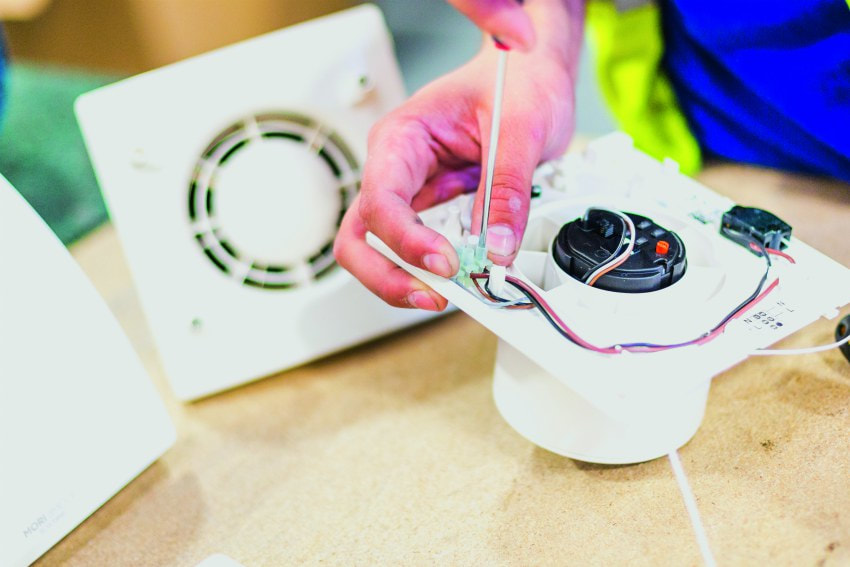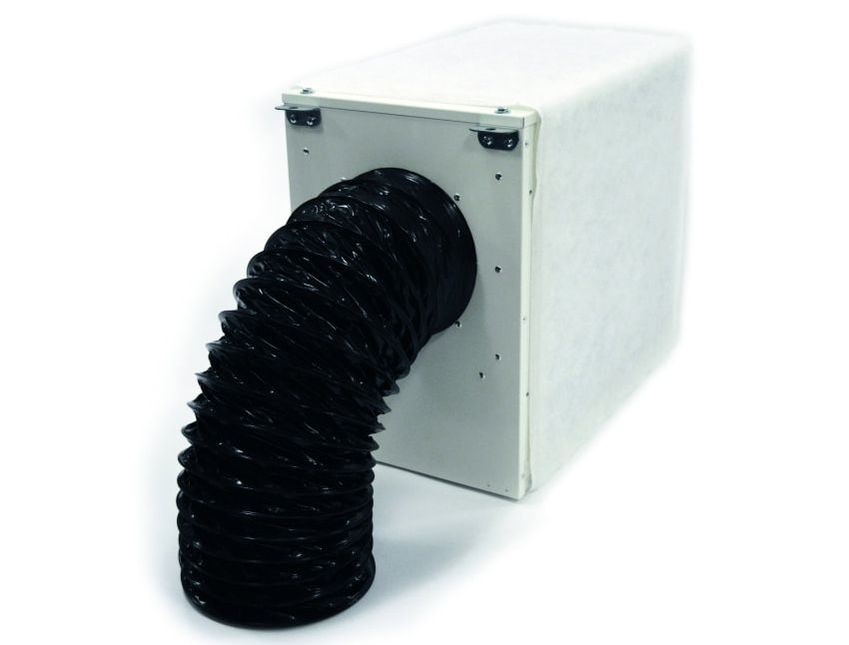23 November 2017
|
| While talk around air quality has historically been largely centred around external pollution within town and cities, air pollution can have surprising knock on effects for indoor air quality (IAQ) in both rural and urban areas. As indoor pollution can be responsible for a number of health issues, Alan Macklin, Group Technical Director at Elta Group, explains why ventilation systems are vital no matter where the property is located. Following the government’s recent focus on improving the air quality within major cities, most people expect the air quality in the countryside to be better than that of built up areas. For the most-part this is true, since emissions and pollutants, including nitrogen dioxide, carbon monoxide and volatile organic compounds, are significantly greater in urban areas. While outdoor air quality tends to grab the majority of the headlines, indoor air quality is just as important – especially given the amount of time that many people spend inside. |
Why pollution happens
When it comes to air quality, the majority of focus has fallen on towns and cities. This is understandable since many play host to congestion and factories which are the primary producers of air pollution build-up. What’s more, in these built up areas, pollution can become trapped between buildings and without any air movement, can quickly mount.
Depending on the time of year, a superior air quality is not always guaranteed in the countryside, as the weather can play an impacting role. When built-up areas experience strong breezes, pollution can drift out from the cities to cover the neighbouring countryside. In much the same way that pollution becomes trapped between buildings in cities, it can also build up in the countryside in low lying areas such as valleys.
While attention has been paid to improving air quality, it’s important to consider how this build-up of pollution can further impact the indoor air quality levels within homes and workplaces, and the impact that poor IAQ can have.
Indoor air quality in the workplace
With many businesses and office spaces located in polluted cities, employers have a duty to ensure that the IAQ provided to staff is of a high standard. A happy workforce doesn’t happen by accident and businesses can underestimate the effect of poor IAQ on office morale.
Aside from irritating respiratory conditions, such as asthma, a poorly ventilated office environment can lead to headaches, dizziness and low levels of concentration. In fact, studies have shown that a CO2 level above thousand parts per million has a direct and negative impact on human cognition and decision-making. This means productivity is lower for employers – as a direct result of air quality.
Indoor air quality at home
Good IAQ is a vital part of our health and can be effected within the home by anything from the use of cleaning products, to the levels of moisture in the air leading to condensation. Dust, mould or fungus spores, and pollen all contribute to poor indoor air quality regardless of whether a property is located within the town or countryside.
Properties in the countryside are much more likely to be off the grid and therefore rely on oil to heat their homes. However, it is important to consider the impact this can have as the burning of fuels in flueless appliances, such as paraffin stoves, portable gas heaters, gas stoves and ovens, and wood burning fires, can also accumulate indoors if ventilation is poor.
While regulations for new buildings have been improved to ensure that homes are more air-tight than ever, there are unsuspecting suspects that can all contribute to poor indoor air quality. Man-made carpets, furniture and laminate flooring can all be responsible for harnessing gases produced by cooking and heating, and can all contribute to indoor air pollution meaning that it is essential adequate ventilation is in place.
Why pollution happens
When it comes to air quality, the majority of focus has fallen on towns and cities. This is understandable since many play host to congestion and factories which are the primary producers of air pollution build-up. What’s more, in these built up areas, pollution can become trapped between buildings and without any air movement, can quickly mount.
Depending on the time of year, a superior air quality is not always guaranteed in the countryside, as the weather can play an impacting role. When built-up areas experience strong breezes, pollution can drift out from the cities to cover the neighbouring countryside. In much the same way that pollution becomes trapped between buildings in cities, it can also build up in the countryside in low lying areas such as valleys.
While attention has been paid to improving air quality, it’s important to consider how this build-up of pollution can further impact the indoor air quality levels within homes and workplaces, and the impact that poor IAQ can have.
Indoor air quality in the workplace
With many businesses and office spaces located in polluted cities, employers have a duty to ensure that the IAQ provided to staff is of a high standard. A happy workforce doesn’t happen by accident and businesses can underestimate the effect of poor IAQ on office morale.
Aside from irritating respiratory conditions, such as asthma, a poorly ventilated office environment can lead to headaches, dizziness and low levels of concentration. In fact, studies have shown that a CO2 level above thousand parts per million has a direct and negative impact on human cognition and decision-making. This means productivity is lower for employers – as a direct result of air quality.
Indoor air quality at home
Good IAQ is a vital part of our health and can be effected within the home by anything from the use of cleaning products, to the levels of moisture in the air leading to condensation. Dust, mould or fungus spores, and pollen all contribute to poor indoor air quality regardless of whether a property is located within the town or countryside.
Properties in the countryside are much more likely to be off the grid and therefore rely on oil to heat their homes. However, it is important to consider the impact this can have as the burning of fuels in flueless appliances, such as paraffin stoves, portable gas heaters, gas stoves and ovens, and wood burning fires, can also accumulate indoors if ventilation is poor.
While regulations for new buildings have been improved to ensure that homes are more air-tight than ever, there are unsuspecting suspects that can all contribute to poor indoor air quality. Man-made carpets, furniture and laminate flooring can all be responsible for harnessing gases produced by cooking and heating, and can all contribute to indoor air pollution meaning that it is essential adequate ventilation is in place.
What can be done?
Measures to clean up emissions from factories and vehicles have greatly improved air in built-up areas. In the meantime, ventilation provides the solution to poor IAQ by removing the unseen pollutants and particles.
For properties in the countryside, simply opening a window will allow fresh air to disperse throughout the building. However for those based in the city, this simple action will not provide the fresh air needed to create a comfortable environment, nor is it possible due to security risks. The result is that all too often the indoor air becomes trapped, leading to recirculating particles, unpleasant odours, condensation causing moisture and increasing CO2 levels.
Modern ventilation systems have since been developed to deliver efficient and effective ventilation for businesses both large and small. However the need to educate homeowners on the minimum ventilation rate remains just as prevalent.
Positive Input Ventilation (PIV) units are commonly used within domestic buildings seeking to improve its IAQ. These low maintenance ventilation units help prevent and cure condensation dampness related problems by supplying a regulated stream of fresh, clean air. They can also be used to control other indoor air pollutants that contribute to poor IAQ. Similarly, Decentralised Mechanical Extract Ventilation (DMEV) units have quickly become the first choice option for homeowners due it its ability to serve a constant supply of fresh air to airtight homes.
In most cases, ventilation is the best way to deal with the issue of poor indoor air quality and there is a wide array of options available depending on the property size, specific air quality issue and location. Whether located in a town or rural area, all properties need to carefully consider what sources of particles they are exposed to and install a ventilation system which is able to cope.
egbuildingservices.co.uk
Measures to clean up emissions from factories and vehicles have greatly improved air in built-up areas. In the meantime, ventilation provides the solution to poor IAQ by removing the unseen pollutants and particles.
For properties in the countryside, simply opening a window will allow fresh air to disperse throughout the building. However for those based in the city, this simple action will not provide the fresh air needed to create a comfortable environment, nor is it possible due to security risks. The result is that all too often the indoor air becomes trapped, leading to recirculating particles, unpleasant odours, condensation causing moisture and increasing CO2 levels.
Modern ventilation systems have since been developed to deliver efficient and effective ventilation for businesses both large and small. However the need to educate homeowners on the minimum ventilation rate remains just as prevalent.
Positive Input Ventilation (PIV) units are commonly used within domestic buildings seeking to improve its IAQ. These low maintenance ventilation units help prevent and cure condensation dampness related problems by supplying a regulated stream of fresh, clean air. They can also be used to control other indoor air pollutants that contribute to poor IAQ. Similarly, Decentralised Mechanical Extract Ventilation (DMEV) units have quickly become the first choice option for homeowners due it its ability to serve a constant supply of fresh air to airtight homes.
In most cases, ventilation is the best way to deal with the issue of poor indoor air quality and there is a wide array of options available depending on the property size, specific air quality issue and location. Whether located in a town or rural area, all properties need to carefully consider what sources of particles they are exposed to and install a ventilation system which is able to cope.
egbuildingservices.co.uk
Content continues after advertisements











